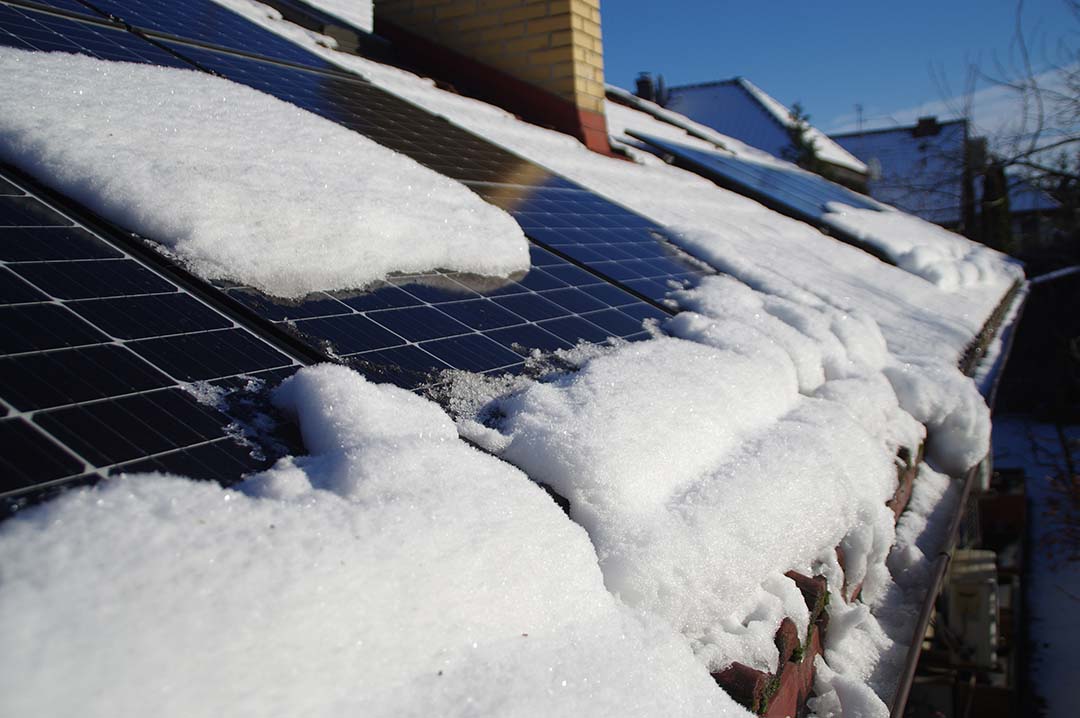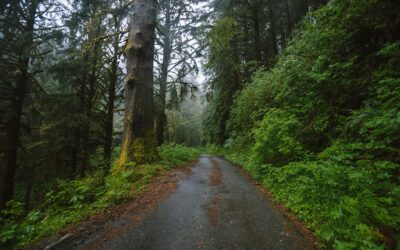Updated 6/23/23: We’ve seen some dramatically different weather over the last few years, as chilly temperatures stretch well into the Spring and storms upend our Summer plans. To meet these changing circumstances, we’ve updated this post to answer the question “Do solar panels work in the winter?” with some additional context.
Like many Oregonians wanting to make the switch to clean energy, you may be wondering “Do solar panels work in the winter?” The bulk of Oregon gets about 8 months of rain throughout the year but far less snow, except for areas like Bend. Solar panels evoke images of sunny weather and clear skies, though, so it’s reasonable to wonder how well they’ll operate when it’s overcast and cold.
Don’t fret: Professionally installed solar energy systems will produce enough energy to keep you cozy all year round. Solar panels are created with the seasons in mind, and supplementary programs like Net Metering will ensure that you have power when you need it.
Solar Panels in Oregon During Winter Weather
Many people believe that solar panels generate energy from the sun’s heat, but that’s not the case. To create power, all your panels need to do is absorb the sun’s rays. When sunlight strikes the cells in solar panels, the process generates an electric current. It’s then routed to your home’s electric distribution box, and used to power your appliances, devices, and even that 12-foot inflatable snowman in the front yard.
But solar panels still need sun, so they definitely can’t work well in the rainy, grey winters Oregon is known for, right? That rain and the chilly mornings can help.
When the temperature drops during the winter, photovoltaic (PV) technology in solar panels converts sunlight to electricity more efficiently. Like anything electronic, the components of a panel can overheat, so cool weather keeps them at an ideal temperature for making the most of even just a few hours of partial, winter sun.
But What if the Snow Covers My Panels?
You’ve probably noticed that the majority of solar systems are sloped. While this helps capture more sunlight, it also aids in the removal of snow. With just a little sunshine, your panels will generate enough heat to create a slippery surface that will send the blanket of snow sliding off your panels like a slip-n-slide.
Another unexpected perk: Snowfall will help keep your solar panels clean and clear after a hot Oregon summer, and months of accumulating dust and dirt. Rain works this way too.
In snowier areas like Bend, know that snow on your roof is unlikely to cause significant damage to your solar panels. Before they’re allowed to be sold, solar panels have their performance determined through a series of pressure tests. Snow is not something new for the experts at Purelight Power. Our panels are rated at 5400 Pa, meaning they can endure more than 110 pounds of snow per square foot.
Just an FYI: Attempting to clear debris from your panels is not recommended; instead, relax with your favorite local brew (coffee or beer) and let the Oregon sunshine do its thing. If you take matters into your own hands and inadvertently damage the system, your warranty might not cover it.
How Oregon Weather Is Changing
Oregon’s weather patterns have seen some significant changes over the past year. The state has witnessed a record-breaking heatwave in the summer and a severe wildfire season that caused unprecedented damage. These weather extremes can impact the solar panels, causing wear and tear. As a result, some solar panel owners in the state have needed to clean and maintain their systems more frequently to get the most energy output from them.
However, even with increased maintenance, solar panels are an investment that can significantly reduce monthly costs. Over the solar panels’ lifespan, system owners will likely still save thousands of dollars on their net utility bills.
Net Metering
Don’t you just love how the sun is out all day and the days seem to drag on forever in the summer? Solar panels love that as well. While you soak up all of those moments by the pool, your solar energy system is soaking up the summer sun and storing it back on the grid for wintertime.
When energy goes back onto the grid, your meter runs in reverse because you’re creating extra electricity. Power companies across Oregon are required to pay you for the energy you provide through a process known as net metering. Besides helping to make solar affordable for homeowners, net metering also means that during months of low power production.
When you’re consuming more electricity than your solar energy system is producing, you have the ability to tap back into the credits you built up with net metering over the summer. Investing in a solar energy system for your roof means clean energy from the sun year-round, day and night.
How Solar Installers Help
By working with a reputable solar installer, you can ensure that your panels are installed to withstand Oregon’s harshest weather conditions. A solar installer will use satellite imagery to determine the best layout for your solar panel system, which helps it operate as efficiently as possible throughout the year. Of course, that hinges on choosing a local installer that understands the lay of the land, from the summer months to the winter.
Purelight Power was founded in Oregon and has an in-depth understanding of the state’s weather and geography. If you’re concerned about whether or not solar is a good fit for your roof, Find out if your roof qualifies for simple, affordable solar with this quick 30-second quiz.




